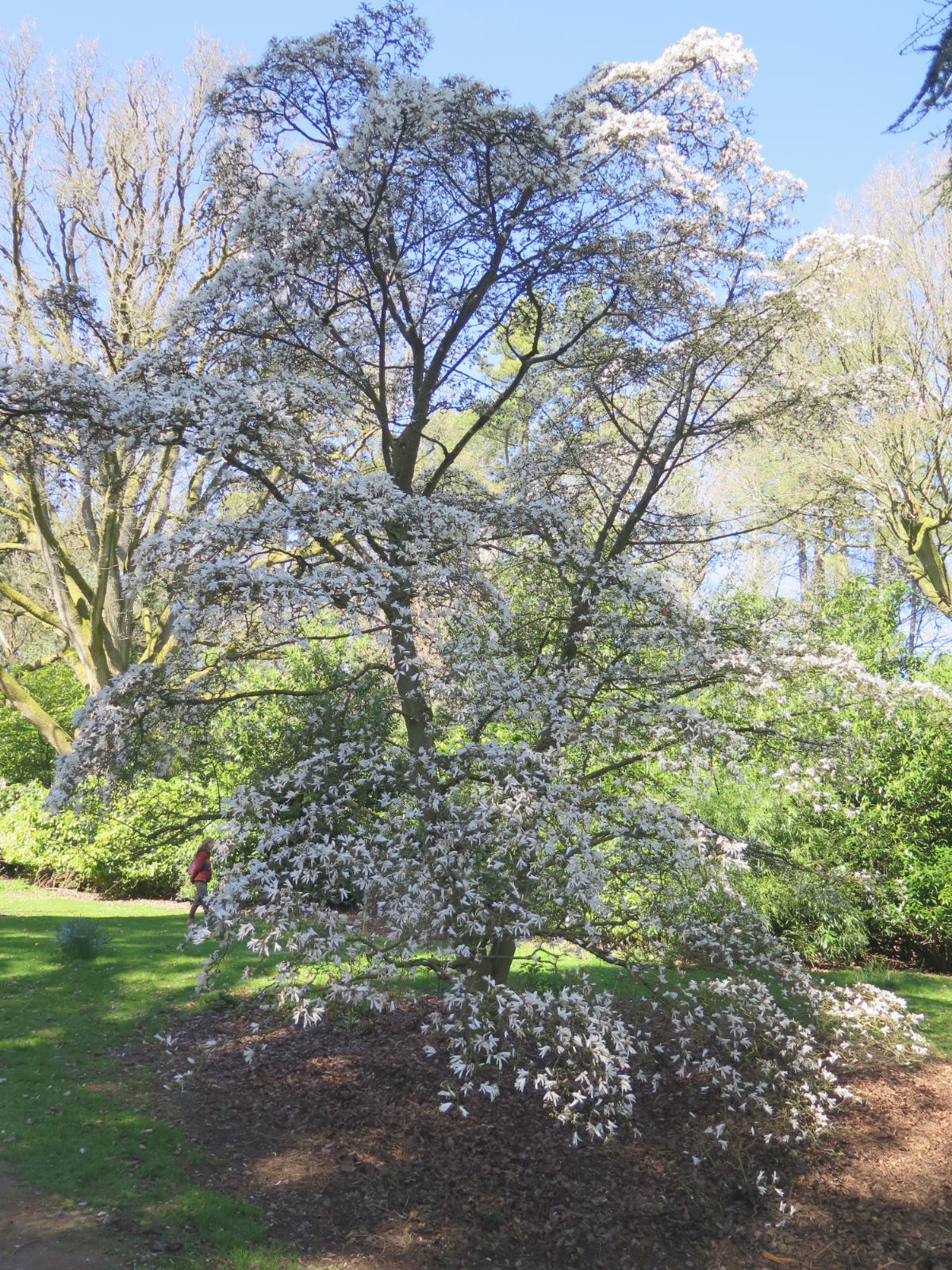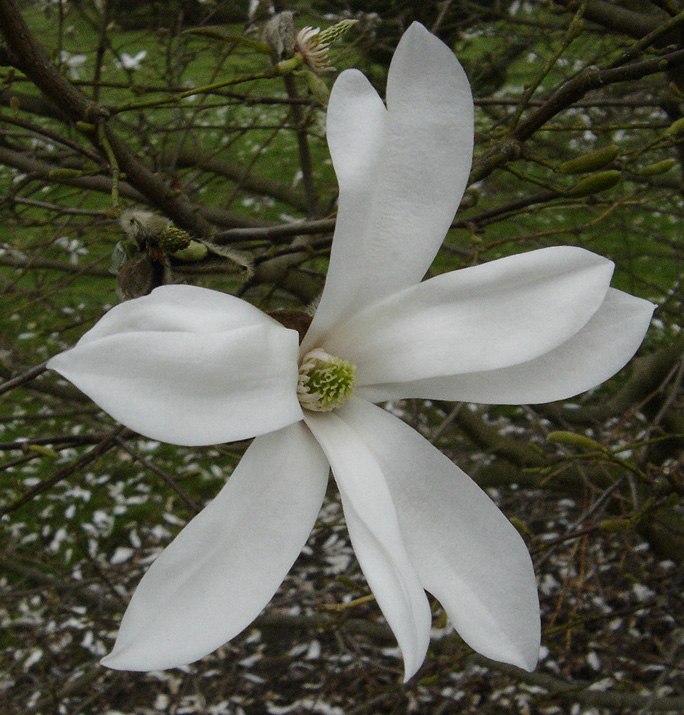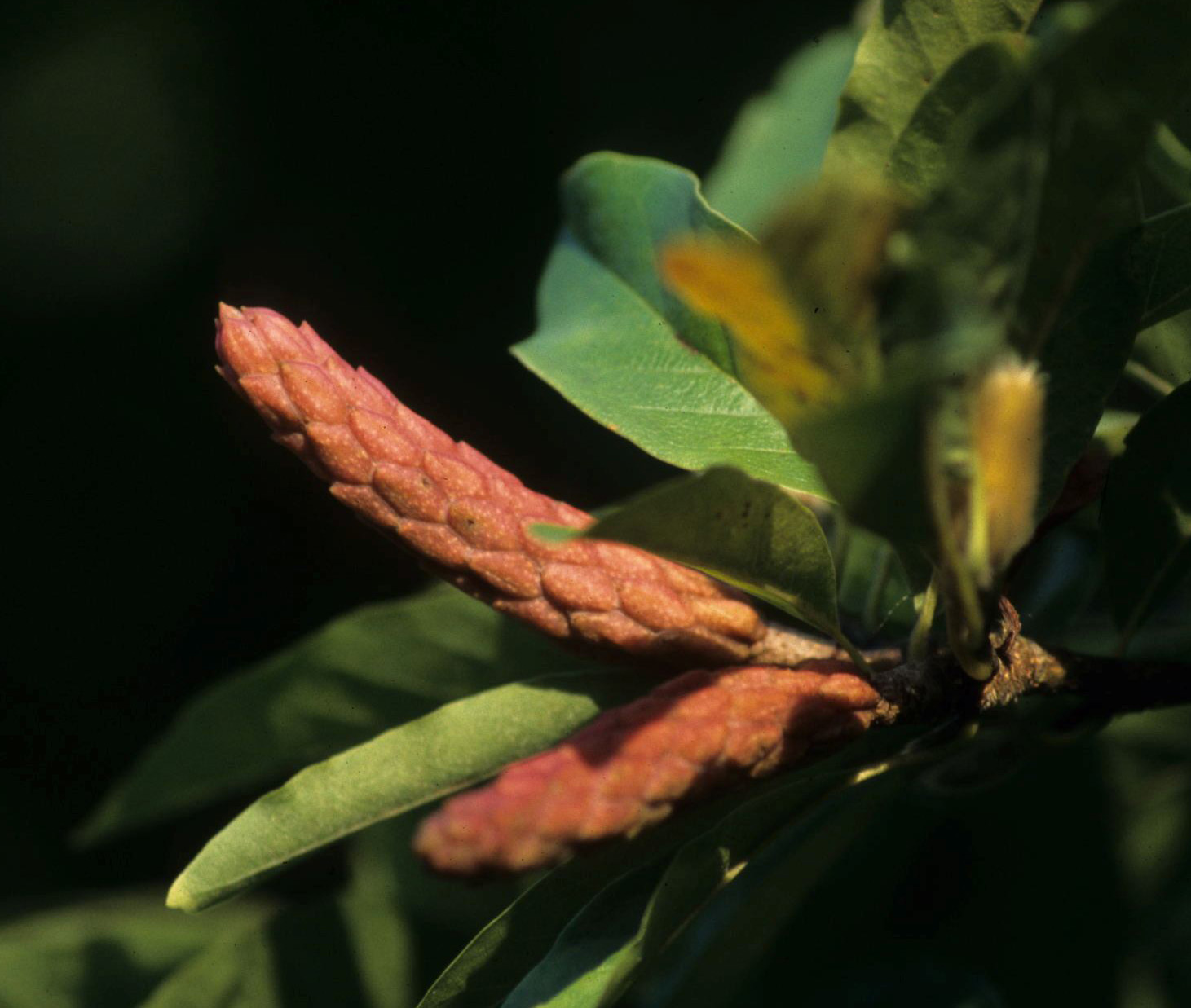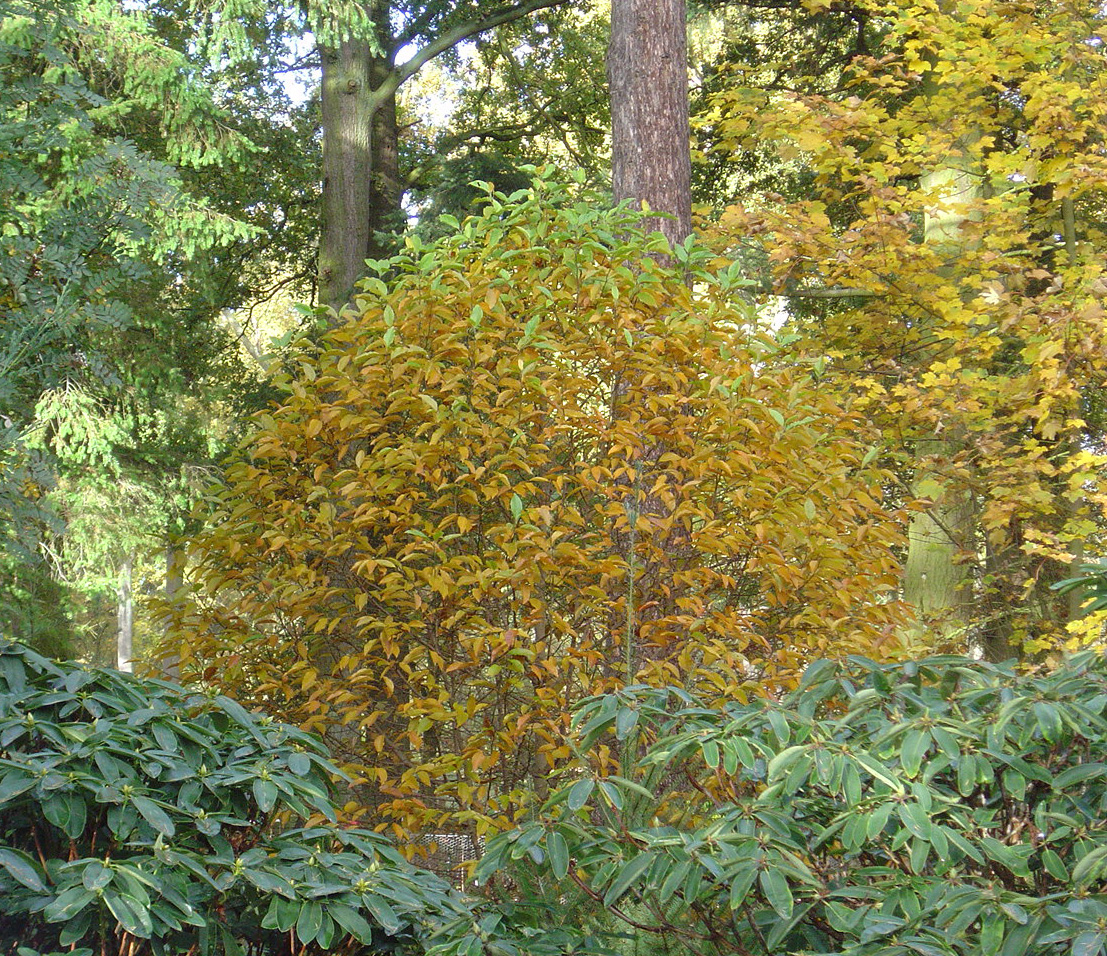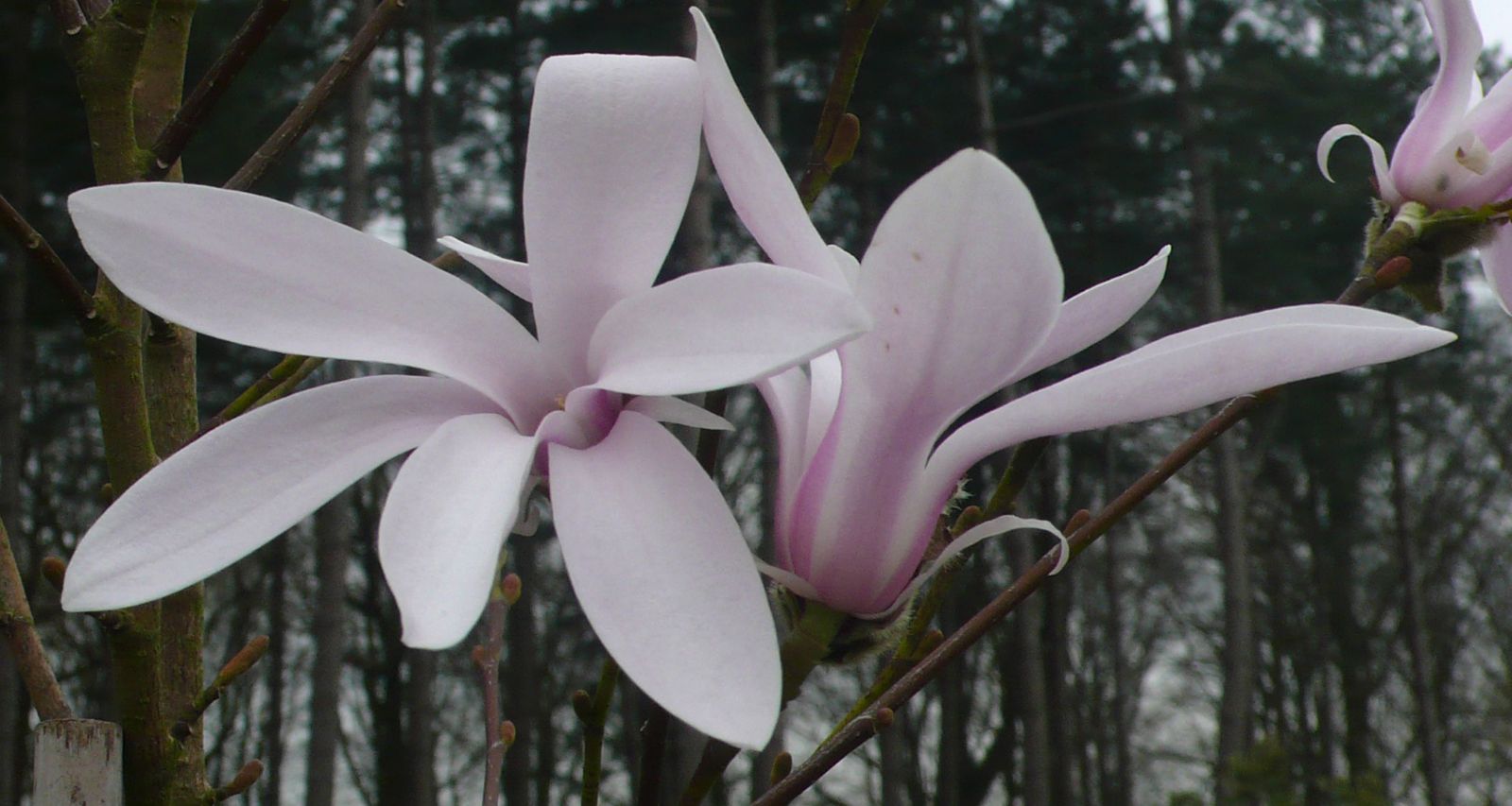Magnolia × proctoriana
Sponsor
Kindly sponsored by
The Roy Overland Charitable Trust

Credits
Julian Sutton (2022)
Recommended citation
Sutton, J. (2022), 'Magnolia × proctoriana ' from the website Trees and Shrubs Online (treesandshrubsonline.
Genus
- Magnolia
- M. salicifolia × M. stellata
Infraspecifics
Other taxa in genus
- Magnolia acuminata
- Magnolia × alba
- Magnolia amabilis
- Magnolia amoena
- Magnolia aromatica
- Magnolia biondii
- Magnolia × brooklynensis
- Magnolia campbellii
- Magnolia cathcartii
- Magnolia cavaleriei
- Magnolia caveana
- Magnolia champaca
- Magnolia changhungtana
- Magnolia chapensis
- Magnolia compressa
- Magnolia conifera
- Magnolia Cultivars A
- Magnolia Cultivars B
- Magnolia Cultivars C
- Magnolia Cultivars D
- Magnolia Cultivars E
- Magnolia Cultivars F
- Magnolia Cultivars G
- Magnolia Cultivars H–I
- Magnolia Cultivars J
- Magnolia Cultivars K
- Magnolia Cultivars L
- Magnolia Cultivars M
- Magnolia Cultivars N–O
- Magnolia Cultivars P
- Magnolia Cultivars Q–R
- Magnolia Cultivars S
- Magnolia Cultivars T
- Magnolia Cultivars U–V
- Magnolia Cultivars W–Z
- Magnolia cylindrica
- Magnolia dandyi
- Magnolia dawsoniana
- Magnolia de Vos and Kosar hybrids
- Magnolia decidua
- Magnolia delavayi
- Magnolia denudata
- Magnolia doltsopa
- Magnolia duclouxii
- Magnolia ernestii
- Magnolia figo
- Magnolia floribunda
- Magnolia × foggii
- Magnolia fordiana
- Magnolia foveolata
- Magnolia fraseri
- Magnolia fulva
- Magnolia globosa
- Magnolia × gotoburgensis
- Magnolia grandiflora
- Magnolia grandis
- Magnolia Gresham hybrids
- Magnolia guangdongensis
- Magnolia hookeri
- Magnolia insignis
- Magnolia Jury hybrids
- Magnolia × kewensis
- Magnolia kobus
- Magnolia kwangtungensis
- Magnolia laevifolia
- Magnolia lanuginosa
- Magnolia leveilleana
- Magnolia liliiflora
- Magnolia × loebneri
- Magnolia lotungensis
- Magnolia macclurei
- Magnolia macrophylla
- Magnolia martini
- Magnolia maudiae
- Magnolia nitida
- Magnolia obovata
- Magnolia officinalis
- Magnolia opipara
- Magnolia × pruhoniciana
- Magnolia rostrata
- Magnolia salicifolia
- Magnolia sapaensis
- Magnolia sargentiana
- Magnolia sieboldii
- Magnolia sinensis
- Magnolia sinica
- Magnolia sinostellata
- Magnolia × soulangeana
- Magnolia sprengeri
- Magnolia stellata
- Magnolia tamaulipana
- Magnolia × thomsoniana
- Magnolia tripetala
- Magnolia × veitchii
- Magnolia virginiana
- Magnolia × wieseneri
- Magnolia wilsonii
- Magnolia xinganensis
- Magnolia yunnanensis
- Magnolia yuyuanensis
- Magnolia zenii
Distribution Japan C Honshu
USDA Hardiness Zone 5-9
RHS Hardiness Rating H6
All hybrids between two Japanese species, M. salicifolia and M. stellata, are covered by this name, including second generation and later seedlings, as well as backcrosses. Whille it was first described from an accidental hybrid in North American cultivation (Rehder 1939), it has since been found in the wild at sites around Nagoya where the parents occur together. Using both morphological and molecular evidence from a wild population, Muranishi et al. (2013) found evidence of F1 and F2 hybrids along with backcrosses only to M. salicifolia. Gardiner (2000) observed a wild population on a hillside near Mizunami; M. stellata grew at lower levels, with M. salicifolia higher up the slope and flowering later; hybrids were seen in between. In Western gardens the hybrid is represented by the type clone (usually simply labelled M. × proctoriana) and a few further cultivars of garden origin.
The type clone is a small, potentially broad-crowned tree (sometimes a large shrub) with oblong leaves to 12 × 4 cm, green beneath. Wood and leaves are anise-scented when crushed, but not nearly to the same degree as in M. salicifolia. Vegetative buds are intermediate between those of the parents, and shortly pubescent. The lightly fragrant flowers are carried profusely on bare branches (typically April in S England), opening horizontally to 10 cm across and tending to nod once fully open. The 6(–12) tepals are white with a hint of pink at the base. It was raised at the Arnold Arboretum from a batch of M. salicifolia seed collected in 1928 in the private Massachusetts arboretum of T.R. Proctor, commemorated in Rehder’s epithet. Some later 20th century literature reflects Steven Spongberg’s (1976) view that it is not a hybrid, but an outlying form of M. salicifolia; this is not the dominant opinion today.
A rich, acidic, moisture-retentive soil in full sun is ideal, although it can flower well in partial shade in southern England. Allow plenty of space for this broad, spreading tree to flourish.
'Robert's Dream'
Flowers pink, fading to white. Upright habit; young leaves pale green with coppery flush. Named for Robert de Belder of Arboretum Kalmthout, before 2000.
'Slavin's Snowy'
Flowers fragrant, to 15 cm across, tepals 6–9 with a distinctive pink blotch at the base. Raised at Highland Park, Rochester, NY, before 1961; named for Bernard H. Slavin of the Rochester Parks Department.

